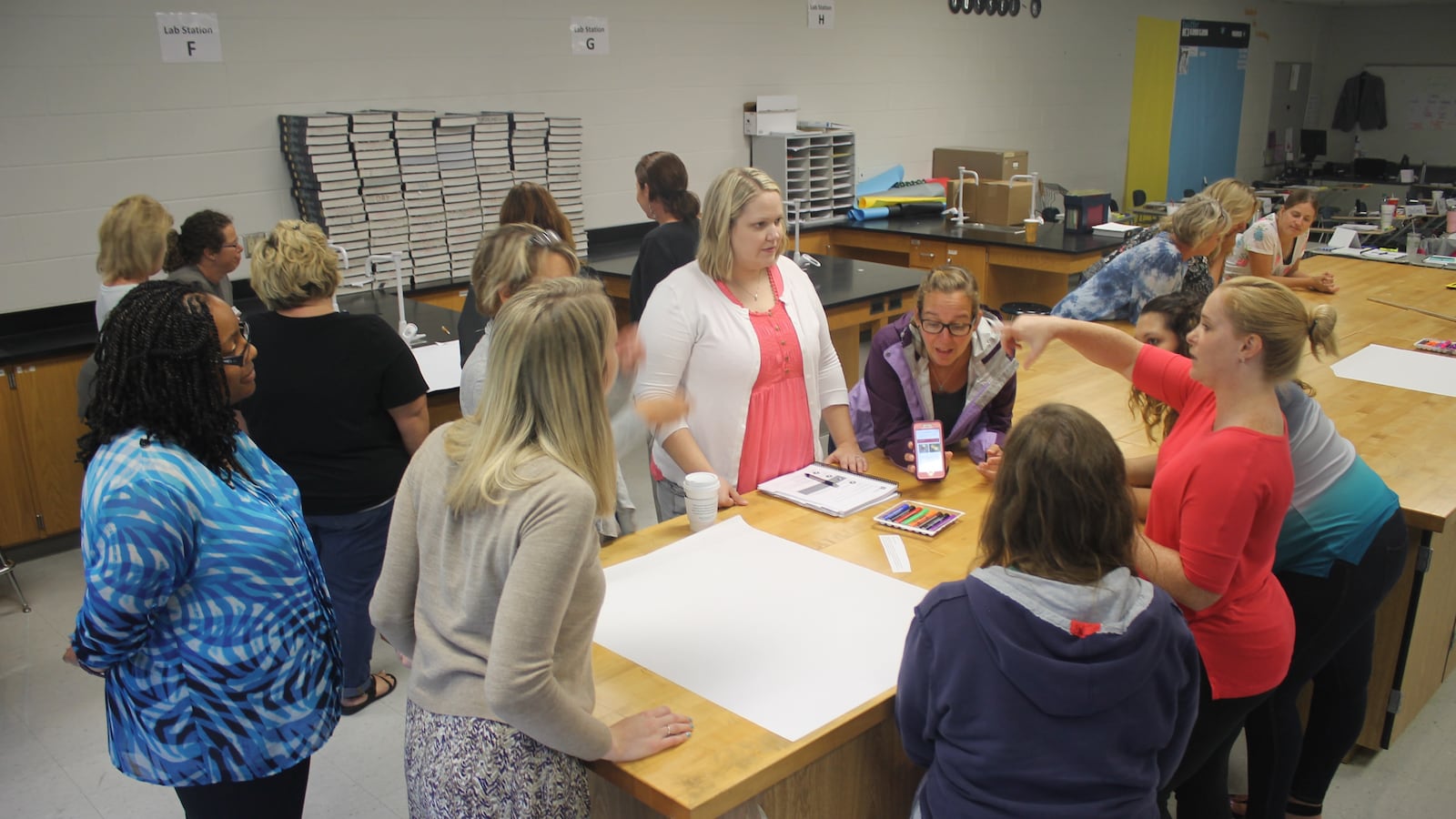A veteran teacher in any school district will likely be able to tell the same story: A faddish new initiative comes sweeping in, perhaps promoted by the just-hired superintendent. Grand promises are made, and teachers get a few days of training (if they’re lucky).
Then, it slowly fades away, as teachers ignore mandates they see as unhelpful or impractical.
A new study looks closely at that phenomenon and its flip side — when teachers are bought in to programs designed to help their schools. The results, based on interviews with dozens of teachers at three high schools, aren’t so surprising: teachers are more enthusiastic if their school gets control over how a new program is designed and introduced.
Teachers leaders “were able to build buy-in from teachers in their school by customizing the design to fit the needs of their students and teachers,” write researchers Christopher Redding and Samantha Viano in the peer-reviewed study.
That involvement brings trade-offs, though. Teachers shaping the adoption of a new program often adjust a novel idea to fit into how they’ve already been working, Redding and Viano found. That could mean that promising ideas were watered down when they reached schools — or that teachers wisely avoid dramatic overhauls that would have done more harm than good.
Either way, the results hold significance for districts pushing dramatic reform efforts and wondering how to make sure they stick.
The conclusions came from talking to teachers over the course of two school years about changes at high schools in an anonymous big-city school district. The schools were all trying to increase students’ academic expectations and their levels of responsibility. To do it, schools were told to allow teams of teachers to develop ideas for ways to help students improve their work habits, understand the idea of “growth mindset,” and closely track their class grades over time.
A few things appeared crucial to winning over teachers. One was their schools not having a history of introducing and then scrapping programs.
Teachers in two of the three schools seemed enthusiastic about the new efforts, in part because their schools had recently put in place a literacy initiative that teachers believed in. But in the third school, teachers were more wary.
“We’ve seen a whole bunch of programs and it was here for like three months and it’s gone and then something else came in,” one teacher leader at the third school told researchers.
Teachers also appreciated that plans were developed by teachers within their schools.
“We had teachers to put those lessons together; it didn’t come from somewhere outside the school; it didn’t come from the district, it came from us,” one teacher said. Even in one school where a small number of teachers did most of the work to build their program, their less-involved colleagues still felt largely supportive. (In each school, though, teachers said a handful of skeptical peers largely did not implement the changes.)
A third winning pitch was framing the initiative as consistent with what teachers were already doing in their classrooms.
“That’s kind of our main pitch to them, is that this is something probably 95 percent of you are already doing, we’re just going to ask that you change your language,” one teacher leader said.
“I don’t see this as an innovation,” another said. “I see this as common sense.”
That may have made teachers more amenable to the changes, but it might have also minimized the underlying goal by suggesting that teachers didn’t have to do much differently. In that sense, “Teacher involvement risks undermining school improvement efforts,” wrote Redding and Viano. “It is conceivable that teacher leaders fail to identify more systematic changes, preferring incremental change that will be better received by the administration and their colleagues.”
A separate, forthcoming study co-written by one of the same researchers found some evidence that the program helped students, modestly reducing absences and increasing grades. That suggests the exercise wasn’t pointless.
Why did it seem to help? One of the teachers interviewed in the initial study offered a theory: consistency. By pitching the initiative as simply encouraging teachers to do things they were already doing, the school succeeded in getting teachers to commit to practices they sometimes skipped, like helping students monitor their grades.
“We should probably be doing [it] anyway,” the teacher said. “I can easily find reasons why it didn’t … but when I know that everybody is doing, you know, it kinda forces me to make sure I’m doing it.”


